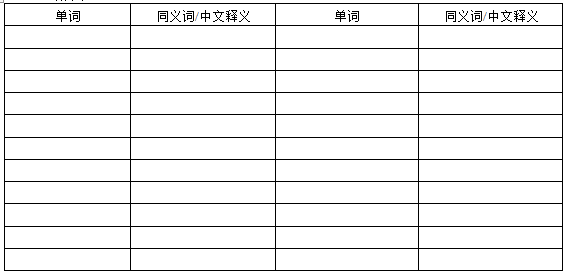托福阅读常考话题及练习题推荐一:地下水(1)
托福阅读常考话题:地下水
Passage 1
Groundwater
Groundwater is the word used to describe water that saturates the ground, filling all the available spaces. By far the most abundant type of groundwater is meteoric water; this is the groundwater that circulates as part of the water cycle. Ordinary meteoric water is water that has soaked into the ground from the surface, from precipitation (rain and snow) and from lakes and streams. There it remains, sometimes for long periods, before emerging at the surface again. At first thought it seems incredible that there can be enough space in the “solid” ground underfoot to hold all this water.
The necessary space is there, however, in many forms. The commonest spaces are those among the particles—sand grains and tiny pebbles—of loose, unconsolidated sand and gravel. Beds of this material, out of sight beneath the soil, are common. They are found wherever fast rivers carrying loads of coarse sediment once flowed. For example, as the great ice sheets that covered North America during the last ice age steadily melted away, huge volumes of water flowed from them. The water was always laden with pebbles, gravel, and sand, known as glacial outwash, that was deposited as the flow slowed down.
The same thing happens to this day, though on a smaller scale, wherever a sediment-laden river or stream emerges from a mountain valley onto relatively flat land, dropping its load as the current slows: the water usually spreads out fanwise, depositing the sediment in the form of a smooth, fan-shaped slope. Sediments are also dropped where a river slows on entering a lake or the sea, the deposited sediments are on a lake floor or the seafloor at first, but will be located inland at some future date, when the sea level falls or the land rises; such beds are sometimes thousands of meters thick.
In lowland country almost any spot on the ground may overlie what was once the bed of a river that has since become buried by soil; if they are now below the water’s upper surface (the water table), the gravels and sands of the former riverbed, and its sandbars, will be saturated with groundwater.
So much for unconsolidated sediments. Consolidated (or cemented) sediments, too, contain millions of minute water-holding pores. This is because the gaps among the original grains are often not totally plugged with cementing chemicals; also, parts of the original grains may become dissolved by percolating groundwater, either while consolidation is taking place or at any time afterwards. The result is that sandstone, for example, can be as porous as the loose sand from which it was formed.
Thus a proportion of the total volume of any sediment, loose or cemented, consists of empty space. Most crystalline rocks are much more solid; a common exception is basalt, a form of solidified volcanic lava, which is sometimes full of tiny bubbles that make it very porous.
The proportion of empty space in a rock is known as its porosity. But note that porosity is not the same as permeability, which measures the ease with which water can flow through a material; this depends on the sizes of the individual cavities and the crevices linking them.
Much of the water in a sample of water-saturated sediment or rock will drain from it if the sample is put in a suitable dry place. But some will remain, clinging to all solid surfaces. It is held there by the force of surface tension without which water would drain instantly from any wet surface, leaving it totally dry. The total volume of water in the saturated sample must therefore be thought of as consisting of water that can, and water that cannot, drain away.
The relative amount of these two kinds of water varies greatly from one kind of rock or sediment to another, even though their porosities may be the same. What happens depends on pore size. If the pores are large, the water in them will exist as drops too heavy for surface tension to hold, and it will drain away; but if the pores are small enough, the water in them will exist as thin films, too light to overcome the force of surface tension holding them in place; then the water will be firmly held.
托福阅读常考话题:地下水练习题
【段落主旨】
Paragraph 1:
Paragraph 2:
Paragraph 3:
Paragraph 4:
Paragraph 5:
Paragraph 6:
Paragraph 7:
Paragraph 8:
Paragraph 9:
【生词摘录】









